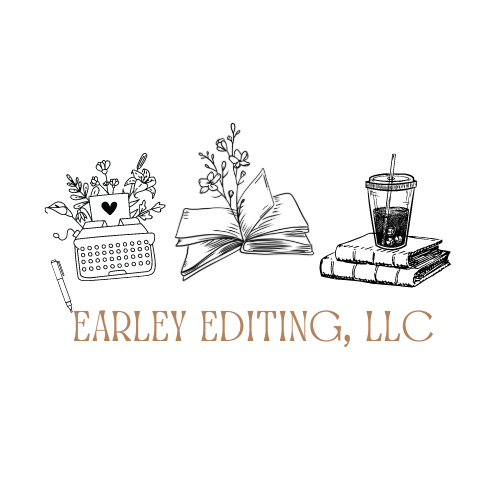How an Author can Ready Their Book to Send it to an Editor
Preparing your book to send it to an editor isn’t as intense a process as preparing it for submission to a literary agent or traditional publisher. Industry standards are in place and they can be picky about the projects they choose to take on, but it isn’t as selective and intimidating. Many editors are excited by the opportunity to work with a self-publishing author!
But perhaps you don’t know when your book is ready to be sent to an editor, or how to prepare your book to be ready to send to an editor. So let’s go over the steps you should take!
Complete the Manuscript: Finish writing your book. Once you have a first draft, that is when you’re ready to start looking around for an editor because that will give you 3+ months to revise and self-edit before sending it to them for further correction.
Self-Editing: Even after you have a finished first draft, there can be scenes you want to add. This is where revising and rewriting comes in. Maybe you realize some of the mistakes you’ve made with your book and want to go through and make it as well-rounded and as close to the story you imagine before sending it off to an editor. Great! You should definitely do this. As you go along, do some self-edits on the manuscript. You might be able to chip away at your word count, which can lower the cost of an editor who charges by word. During revisions, read your draft critically, focusing on areas such as plot, character development, pacing, and language. Make necessary revisions and improvements based on your own evaluation.
Beta Readers or Critique Partners: Consider seeking feedback from beta readers or critique partners. These individuals can provide valuable insights and suggestions to improve your manuscript before sending it to an editor.
Determine Your Editing Needs: Decide on the level of editing you require for your manuscript. Editors offer various services, including developmental editing, line editing, copyediting, and proofreading. Identify the specific editing services your book needs.
Research and Identify Freelance Editors: Look for freelance editors who specialize in your genre and have relevant experience. Seek recommendations from other authors, social media, or use online directories to find qualified editors. Take the time to review their portfolios and check their references or testimonials.
Prepare a Sample: Some editors may request a sample of your manuscript to assess your writing style and determine the level of editing required. Prepare to send the first 500-1,500 words of your book. The editor will perform your desired service on this sample to give you the chance to review how they would edit and adapt to your writing.
Contact Potential Editors: Reach out to the editors you have identified as soon as you have a first draft. Editors book out anywhere from 3-6+ months in advance. Send them an initial inquiry email to see what the next steps are and how they communicate.
Evaluate Editor Responses: Once you receive responses from editors, review their proposals, rates, sample edits, and any additional information they provide. Consider factors such as their expertise, communication style, and compatibility with your vision for the book. Before you sign anything with an editor, make sure the contract protects you (the writer), your work, and holds the editor accountable.
Submit the Manuscript: After finalizing timelines with your editor, submit your complete manuscript according to their guidelines (most editors work in Microsoft Word) and on the due date agreed upon. Turning it in to the editor may involve sending it via email, file-sharing platforms, or other methods as instructed by the editor.
Communication: Throughout the editing process, don’t hesitate to reach out to your editor with any questions or concerns. However, we don’t recommend overloading them with questions like, “Is it good?” or “Do you hate my book?” because that takes away from the editors work and slows down their process. In turn, be responsive to their inquiries or requests for clarification, and be prepared to discuss any suggested changes or revisions they propose.
Review and Incorporate Edits: Once the editor completes their work, they will return the edited manuscript to you. Carefully review their edits, comments, suggestions, and maybe even an editorial letter they sent along with everything. Evaluate the changes and decide which ones to accept or discuss further with the editor.
And those are the steps you would take to ready your manuscript and work with an editor! Again, do not be intimidated, as many are excited by the inquiries they receive and genuinely love when an author reaches out to them for assistance in reaching their publishing goals. Working with a book editor can significantly enhance the quality of your book. Their expertise and objective perspective can help you refine your manuscript before moving forward with publishing.
